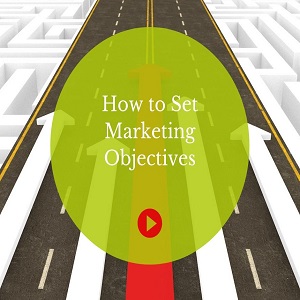Digital Fatigue? We Cut Through the Noise with Real-World Mascot Magic In today’s hyper-connected world,…
 How to Set Marketing Objectives
How to Set Marketing Objectives
Consistent, targeted marketing both on and offline is the driver behind expanding your brand and growing your business. With a path set for the direction of travel, the assumption is that setting marketing objectives – reachable, measurable goals – is easy. But it isn’t. and with pitfalls a-plenty, how do you set marketing objectives that work?
The one pitfall with marketing objectives that isn’t talked about often enough is when the marketing drive becomes focussed on pursuing company goals at the expense of focusing on the customer.
Customer AND Company Focus
The key to growth is to stay focused on results for the company and yet, there is evidence that suggests by doing so, you won’t produce results. Tim Cook, CEO of Apple, once said, “we [Apple] are not focused on the numbers… we’re focused on the things that produce the numbers”. In other words, focusing on your customers and their needs should not be forgotten in the pursuit of company expansion. What does this mean for marketing objectives?
What are ‘marketing objectives’?
Usually, marketing objectives are the goals against which hard metrics and goals are set and measured. They specify what you want to achieve. But what isn’t always fleshed out enough is the how and the why these goals need to be reached or why you want to achieve them.
Concrete targets – ‘find 20 new clients this quarter’ – galvanise and incentivise your staff team to drive in the direction of acquiring more customers and blowing the goal out of the water. What it doesn’t address is the why this is important and how you are going to do this.
The founder of Unthinkable Media, specialists in helping brands to lever the power of podcasts, labels the why, how and what on marketing objectives as hunger, aspirational anchor and goal.
Hunger is the why a certain marketing campaign is being done. Sticking with experiential marketing as an example, you may decide a red carpet flash mob is the way forward because previous marketing campaigns did not excite an emotional response for customer or fans.
The aspiration anchor in this context is the how of creating a marketing campaign that leaps from the page and captures the emotional reaction in people.
The goal is the aim of the marketing campaign. This is the ‘hard’ metric – for the red carpet flash mob event, for example, you want to increase sales by 20%/ 50%/ 90% etc.
Using the SMART framework
This doesn’t mean that the SMART framework of goal setting is broken – far from it. But when you have the hunger and the anchor of how you are going to achieve these results, you need the detailed framework for the journey you will go on to achieve them.
- Specific – pinpointing a metric in your marketing plan is essential. By doing so, you determine what resources, people and skills will be needed.
- Measurable – gauging progress is done by quantifying your goals.
- Attainable – is the metric really achievable? There is nothing wrong in being ambitious but don’t underestimate yourself or your team either to drive towards a lofty goal.
- Relevant – marketing objectives that are relevant for your industry also make more sense in the endeavour to push your business forward. Are you marking out an objective because everyone else seems to be doing it or because it is the right way forward?
- Time-bound – giving yourself and your team a deadline by which something needs to be achieved or will be reviewed/measured helps to retain focus on the end goal.
- The time slot is down to you – do you want to review weekly for more pressing projects or measure success every quarter or six months.
For ultimate success when it comes to marketing objectives, blend the why, the how and the what in your marketing objectives framework and plan.



